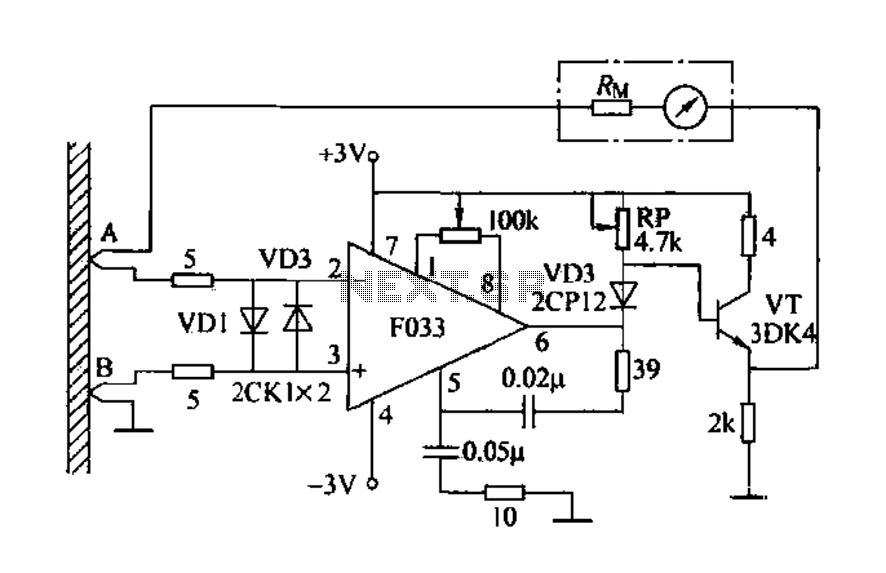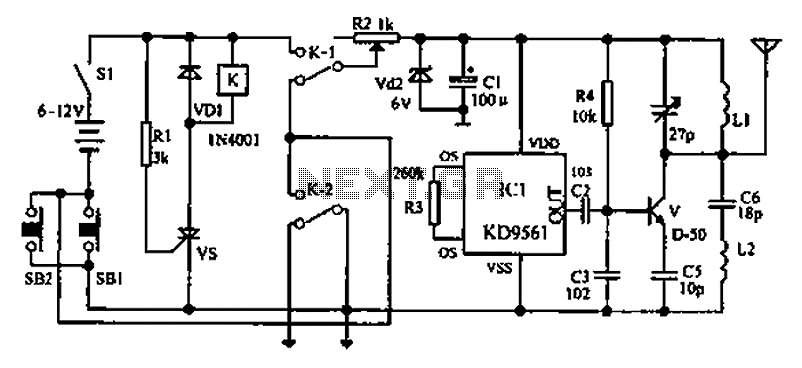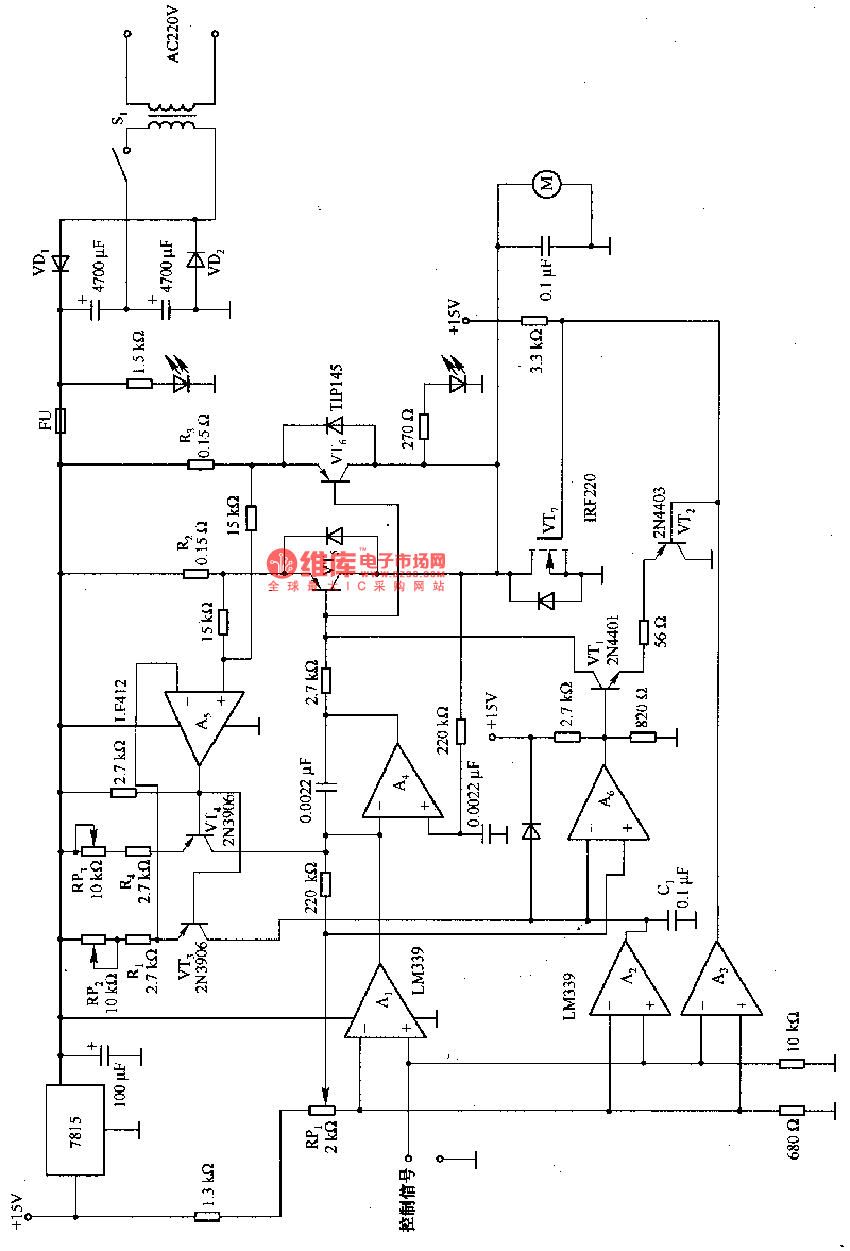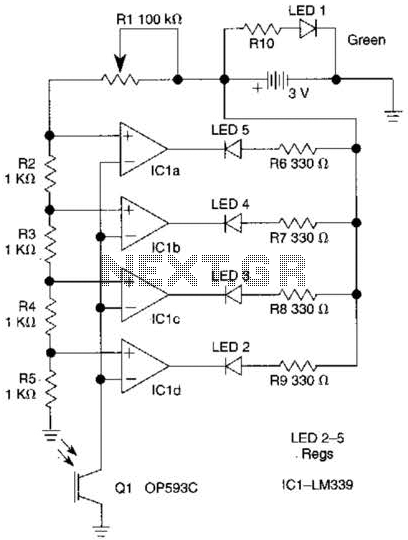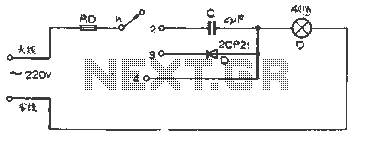
Diode Matching Circuit
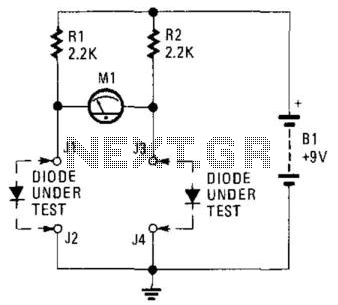
This circuit can be utilized to match diodes for applications where balance is essential, such as in a balanced modulator. The diode matching circuit will display the forward voltage drop of the two diodes in millivolts.
The diode matching circuit is designed to ensure that two diodes exhibit similar electrical characteristics, particularly their forward voltage drop. This is crucial in applications like balanced modulators, where mismatched diodes can lead to distortion and inefficiency in signal processing.
The circuit typically consists of a voltage source, a measurement device (such as a multimeter or an analog-to-digital converter), and the two diodes under test. The diodes are connected in a way that allows the forward voltage drop across each diode to be measured simultaneously.
In operation, the circuit applies a known forward bias voltage to both diodes. As current flows through the diodes, their individual forward voltage drops are measured. The circuit can be designed to display these values on an LED or LCD screen, providing a clear visual indication of the matching status.
Calibration is critical for accurate measurements; thus, the circuit may include adjustable resistors to fine-tune the voltage levels for precise readings. The output can be configured to indicate whether the diodes are matched within a specified tolerance, helping engineers select the most suitable components for their applications.
Overall, this diode matching circuit serves as a valuable tool in the design and testing of electronic systems, ensuring optimal performance and reliability in diode-dependent applications. This circuit can be used to match diodes for use in circuits where such a balance is necessary (a balanced modulator , for instance). The diode matching circuit will indicate the forward-voltage drop of the two diodes in millivolts.
The diode matching circuit is designed to ensure that two diodes exhibit similar electrical characteristics, particularly their forward voltage drop. This is crucial in applications like balanced modulators, where mismatched diodes can lead to distortion and inefficiency in signal processing.
The circuit typically consists of a voltage source, a measurement device (such as a multimeter or an analog-to-digital converter), and the two diodes under test. The diodes are connected in a way that allows the forward voltage drop across each diode to be measured simultaneously.
In operation, the circuit applies a known forward bias voltage to both diodes. As current flows through the diodes, their individual forward voltage drops are measured. The circuit can be designed to display these values on an LED or LCD screen, providing a clear visual indication of the matching status.
Calibration is critical for accurate measurements; thus, the circuit may include adjustable resistors to fine-tune the voltage levels for precise readings. The output can be configured to indicate whether the diodes are matched within a specified tolerance, helping engineers select the most suitable components for their applications.
Overall, this diode matching circuit serves as a valuable tool in the design and testing of electronic systems, ensuring optimal performance and reliability in diode-dependent applications. This circuit can be used to match diodes for use in circuits where such a balance is necessary (a balanced modulator , for instance). The diode matching circuit will indicate the forward-voltage drop of the two diodes in millivolts.
